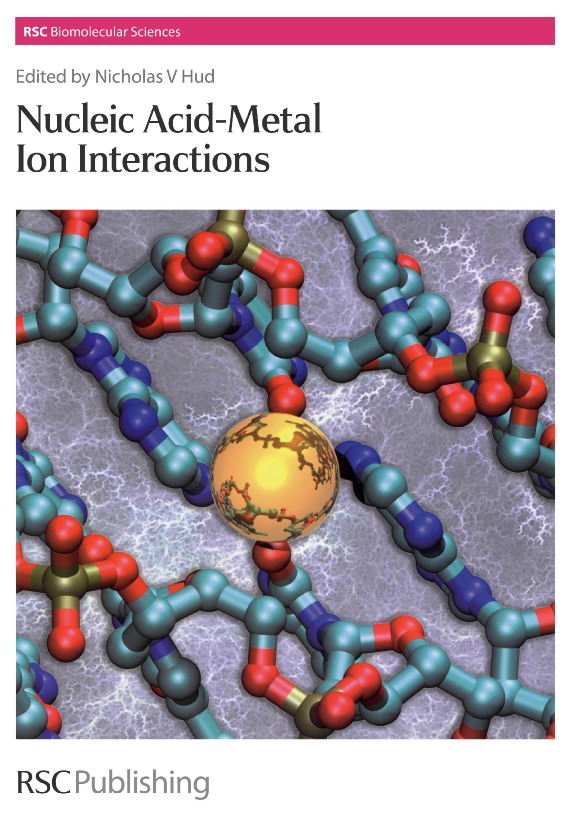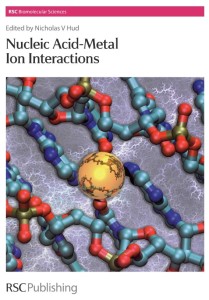Metal Ion Interactions with G-Quadruplex Structures
Aaron E. Engelhart, Janez Plavec, Özgül Persil and Nicholas V. Hud
in Nucleic Acid-Metal Ion Interactions (RSC Publishing), 2009, 118-153. doi: 10.1039/9781847558763-00118
Publisher | ResearchGate | Google Scholar (Book)
Review in Angewandte Chemie International Edition in English | Review in Journal of the American Chemical Society
Scientific Abstract
In this chapter, we focus on the nature of cation coordination within Gquadruplex structures. Solid-state and solution-phase structural studies have informed our understanding of the localization of cations of varied size and charge within quadruplexes, in addition to the effects of such ions on quadruplex structure in general. Solution-state studies have provided direct evidence for the dynamic exchange of cations between coordination sites and bulk solvent. Various techniques have provided thermodynamic insight into the origin of cation selectivity phenomena. Some discussion is also provided regarding the relationship between the species of coordinated cation and the topology of a G-quadruplex assumed by a particular DNA sequence.For a more general and extensive overview of G-quadruplexes, including their medical and biological relevance, the reader is referred to a previous volume in this series that was dedicated specifically to G-quadruplex structures.
Lay Abstract
Strands of DNA containing high amounts of G nucleobases can form a four-stranded helix (in contrast to the double helix found in most DNA) called a G-quadruplex. These G-quadruplex structures bind metal ions in their center, and there is a delicate interplay between the three dimensional structure of the DNA and the way in which they bind these metal ions. In this book chapter, we review results from investigators working in the field relating to these G-Quadruplex-metal ion interactions.

